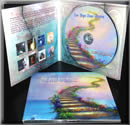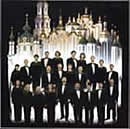Two Steps From Heaven

Classical Crossover

Sacred Choral Music
by Kiev Chamber Choir

Video:
Ukrainian Folk Music
Free Dog Clipart

Classical Crossover

Sacred Choral Music
by Kiev Chamber Choir

Video:
Ukrainian Folk Music
Free Dog Clipart
Russian Orthodox Church Sacred Choral Music on Amazon
ALL ABOUT
AVE MARIA LYRICS
Celine Dion: What Does She Sing?
MOBILE WEBSITE
 DOWNLOAD THIS SONG FOR FREE You won't find this song anywhere on the Internet. CHAPTER 2 : Getting Started Focus on Your Instrument Experiment Keep it Simple Get it Hot Target Your Frequency Gain Staging Limit Compression & EQ When Recording Avoid Phase Cancellation Avoid phase cancellation While recognizing and avoiding phase cancellation takes experience and understanding, using a three-to-one ratio is a good place to start in your home studio when using more than one microphone to capture a sound source. Three-to-one means the second microphone should be three times (or more) the distance from the source than the first microphone. Bear in mind, if the sound source or your microphone is close to a reflective wall, that could cause another phase cancellation. In a gigantic empty space, the threeto- one rule generally works. It also works in a smaller space, but you have to deal with other artifacts like early reflections, reverberation in general, standing waves, and nodes. “An out-of-phase signal can cause instruments to disappear from your mix if somebody’s speakers are wired incorrectly,” says Raison. “In a home environment, you have to be doubly aware of this because you’re working in smaller spaces and potentially have greater possibility of phase problems. “If you’re using a computer for your home recording there are phase correlation meter plugins that will show you the health of your phase in your stereo field. If you’re working outside of a computer environment, you have to be able to recognize it, and that takes a set of ears. A trick that sometimes works is to flip the phase on one of the channels in your mix and then put the mix in mono. Most stand-alone units have a mono button, so if you flip the phase on either your left or right channel, and you put it in mono, you’ll hear if things disappear. Typically it’s the stuff down the middle that disappears, which in my world means the stuff that splits evenly between right and left — bass guitar, kick drum, snare drum, lead vocal.” VOCAL TUNING AND PITCH CORRECTION
All singers know that usually vocal studio recording has pitch issues. However, vocal pitch correction will help fix flat or sharp notes and clean up your vocals. Click here if you feel you have some problems with your vocal tracks |
HOW TO MAKE HOME
|
DOWNLOAD THIS SONG FOR FREE
You won't find this song anywhere on the Internet.
HOW TO MAKE HOME RECORDING STUDIO